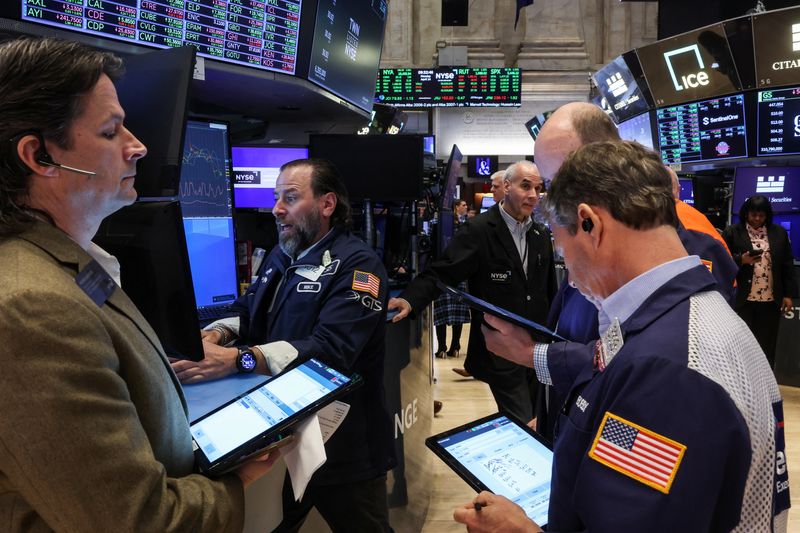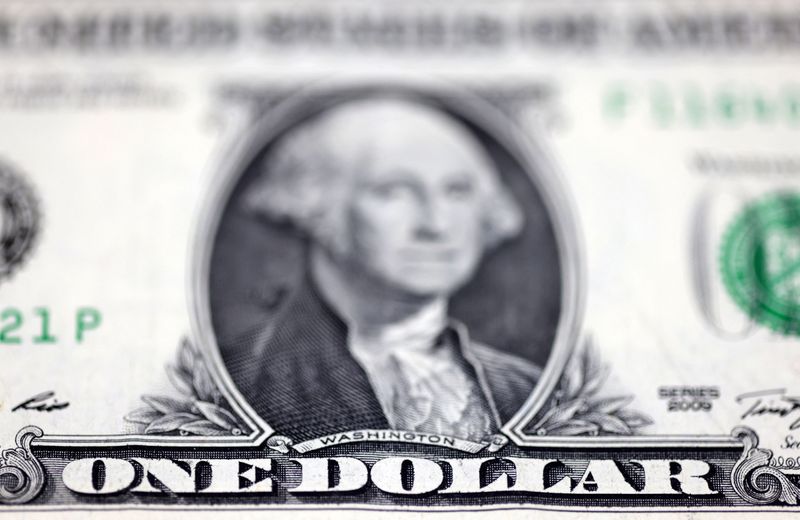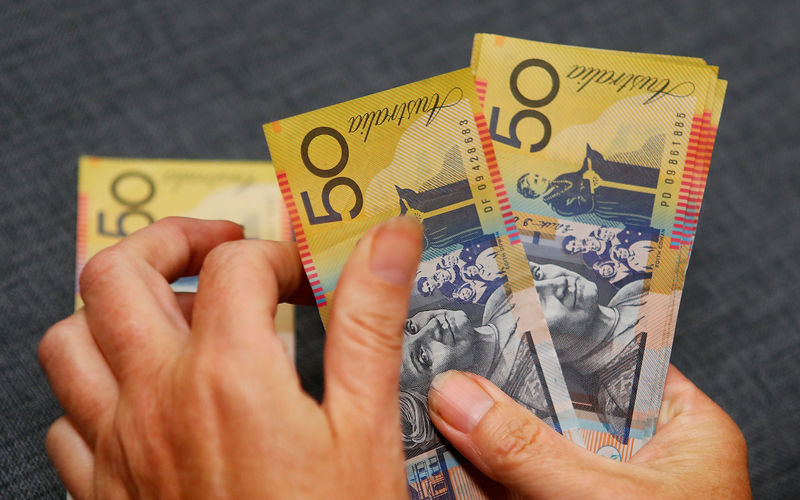Select Language

U.S. stock index futures moved lower on Thursday, as investors turned cautious in the run up to Friday’s crucial nonfarm payrolls, while defense companies advanced after President Donald Trump called for a $1.5 trillion military budget.
Trump said that the 2027 U.S. military budget should be $1.5 trillion, significantly higher than the $901 billion approved by Congress for 2026.
RTX gained 4.9%, Lockheed Martin was up 7.2%, Northrop Grumman inched 7.5% higher and Kratos Defense advanced 7.1%.
Investors looked past Trump’s vow to block defence contractors from paying dividends or buying back shares until they speed up weapons production.
The move comes days after U.S. military forces captured Venezuelan President Nicolas Maduro. The White House said on Tuesday that Trump was also discussing options for acquiring Greenland.
"While details are unclear and implementation cumbersome, a move towards more government intervention would create uncertainty and add to some risk premium in the markets," said Mohit Kumar, an economist at Jefferies.
"We still remain constructive on the market but acknowledge the episodes of volatility which can follow Trump tweets. So far market has ignored geopolitical risks and focused on the fundamentals."
At 05:08 a.m. ET, Dow E-minis were down 146 points, or 0.30%, S&P 500 E-minis were down 15.5 points, or 0.22% and Nasdaq 100 E-minis were down 80.25 points, or 0.31%.
The S&P 500 and the Dow ended Wednesday lower after hitting record highs earlier in the session as banks retreated from their peaks. The Dow marked its steepest one-day decline since November 18.
Meanwhile, artificial-intelligence stocks boosted the tech-heavy Nasdaq to its highest level since late October.
The focus this week will be on Friday’s crucial nonfarm payrolls report for December, which would be among the first reliable datasets after the longest U.S. shutdown in history.
Separate reports this week have pointed to a weak picture, with job openings dropping to a 14-month low, while hirings remained sluggish.
A weekly reading of jobless claims data is expected on Thursday.
Among other stocks, Applied Digital was up 7.4% in premarket trading after the data center operator reported second-quarter revenue above Wall Street estimates on Wednesday.
Constellation Brands was up 2.3% after reporting third-quarter sales and profit above Wall Street estimates on Wednesday.

Gold prices could face near-term pressure next week as index-driven flows are set to weigh on the market during the Bloomberg Commodity Index’s (BCOM) annual January rebalancing, Deutsche Bank analyst Michael Hsueh said.
“Gold and silver are amongst the commodities which will likely be negatively affected by BCOM index rebalancing during the month of January, in addition to aluminium. On the other hand, cocoa, crude oil, natural gas and gas oil will likely be positively affected,” Hsueh wrote in a note.
The rebalancing process will run from January 9 to January 15.
The adjustment reflects a sharp cut in gold’s weighting within the index, driven by index rules that cap the exposure to any single commodity in order to preserve diversification.
Gold’s target weighting in the BCOM is set to fall to 14.9% from 20.4% due to the BCOM "index rule that no single commodity can exceed a 15% weighting, seeking to maintain diversification."
Hsueh estimates that the rebalancing implies roughly 2.4 million troy ounces of gold selling over the five-day window.
Based on historical sensitivities observed in exchange-traded products, the analyst said this flow “may be worth 2.5-3.0% on the gold price,” depending on the lookback period and whether weekly or monthly changes are used.
Silver is also expected to face a negative impact. When scaling expected flows by open interest and average daily trading volume, gold and silver rank among the commodities with the largest projected rebalancing supply, Hsueh noted.
That said, the analyst cautioned that the relationship between index rebalancing and price action has not been consistent year to year.
Looking back over the past five rebalancing events, he pointed out that large weighting changes generally coincided with price moves in the same direction between 2021 and 2024.
However, 2025 stood out as an exception, when “a reduction in the gold weight was accompanied by rise in the gold price,” Hsueh added.

Oil prices jumped in European trade on Tuesday, with market volatility appearing to subside as traders digested the U.S. capture of Venezuelan President Nicolas Maduro.
Prices settled higher after a whipsaw session on Monday, as traders priced in a greater risk premium for oil from heightened geopolitical uncertainty.
But markets struggled to gauge just what the implications of a U.S. takeover of Venezuela’s oil industry would entail for the sector.
A mix of profit-taking and strength in the dollar pressured oil prices on Tuesday. Crude markets were also nursing their worst annual decline in five years in 2025, amid persistent concerns over a supply glut in 2026.
Brent oil futures for March rose 0.2% to $61.89 a barrel, while West Texas Intermediate crude futures also edged up 0.2% to $58.42 a barrel by 04:58 ET (09:58 GMT).
Venezuela names Delcy Rodriguez as interim president
Maduro’s vice president, Delcy Rodriguez, was sworn in as interim president on Monday. While she did offer words of support for Maduro, it was unclear whether she planned to challenge the U.S. incursion.
Reports on Monday showed U.S. intelligence viewed Rodriguez as best positioned to lead a temporary government.
Maduro on Monday pleaded not guilty to U.S. charges of narcotics distribution.
Appearing in a New York court just days after his capture in Caracas by U.S. forces, Maduro said he was innocent and that he was still the president of Venezuela.
Maduro’s capture, which U.S. President Donald Trump said was carried out without Congress approval, shocked global markets this week. Trump signaled that the U.S. will temporarily take control of Venezuela and open up the country’s oil industry, inviting major American oil companies to invest in the country.
Venezuela leadership transition key to oil outlook
Analysts broadly opined that an opening up of Venezuela’s oil industry, by major U.S. producers, was likely to increase global supplies and weigh on crude prices.
But such a scenario hinges on there being a peaceful transition in Venezuelan leadership, which would then allow for the lifting of U.S. sanctions against the country. Such a move was likely to take time, given the high amount of investment needed to overhaul the country’s aging oil infrastructure.
ANZ analysts said a peaceful transition appeared unlikely, and that they expect a period of heightened political instability in Venezuela.
“The US action in Venezuela is likely to see the risk of supply disruptions remain elevated in the short term,” ANZ analysts said in a note.
Political instability is likely to deter international companies from investing in the country, with Trump also having provided no clear plans on how the U.S. intends to “run” the Latin American nation.
This in turn could lead to few immediate changes in oil supplies from Venezuela, with U.S. sanctions on the country to remain in place for the time being.

A daring U.S. capture of Venezuela’s leader is in the spotlight at the outset of the first full trading week of 2026. Analysts are attempting to wrap their heads around the implications of the incursion, which will see the U.S. assuming temporary control over the oil-rich Latin American nation. Investors are also preparing for the release of key employment figures, as the schedule of economic data looks set to return to normal following a prolonged U.S. government shutdown. Elsewhere, Nvidia CEO Jensen Huang is expected to speak at an event on the outlook for artificial intelligence this year, while the board of Warner Bros Discovery is reportedly seen rejecting a sweetened takeover offer from Paramount Skydance.
1. Oil dips following U.S. capture of Venezuela’s Maduro
Crude prices took a tumble on Monday after an audacious U.S. capture of Venezuelan President Nicolas Maduro raised the prospect of more supply coming from the major Latin American producer.
Brent oil futures for March fell 0.8% to $60.27 a barrel by 03:08 ET (08:08 GMT), while West Texas Intermediate crude futures dropped 0.9% to $56.82 a barrel.
U.S. forces captured Maduro in a weekend strike, with the Venezuelan leader now set to face drug-trafficking charges in New York. President Donald Trump said that Washington will run Venezuela until a new leader is elected, and that as part of the incursion, major U.S. oil companies will be allowed to move into the country.
Shares of oil groups, Chevron, ExxonMobil, and ConocoPhillips, all surged in extended hours trading.
Venezuela has the largest proven oil reserves in the world. But output from the country has faltered due to aging infrastructure and strict U.S. sanctions.
In a note, Warren Patterson, Head of Commodities Strategy at ING said that statements from Venezuelan Vice President Delcy Rodriguez calling for the country and the U.S. to work together suggest that a "smooth transition" may be ahead despite the recent upheaval.
This would increase the likelihood that the U.S. will lift its blockade of sanctioned oil tankers entering and leaving Venezuela, putting possible short-term downward pressure on oil prices, Patterson argued.
However, a "messier transition" could put roughly 900,000 barrels per day of oil supply from Venezuela at risk, Patterson said. Some upside risk could be in play then, although this is likely to be limited in an already "well-supplied" market, Patterson added.
2. Employment data
Headlining the economic calendar this week is the upcoming release of U.S. employment data for December.
Economists expect the U.S. to have added some 57,000 roles during the final month of 2025, down from 64,000 in November. In October, a spate of government-related spending reductions triggered the sharpest decline in nonfarm payrolls in almost five years.
The cadence of monthly jobs figures is set to normalize after a prolonged, 43-day U.S. government shutdown led to the delay of these crucial reports. The previous batch of jobs data did not include an unemployment rate for October, marking the first gap in a series that stretches back to 1948.
Federal Reserve policymakers slashed interest rates at the conclusion of each of its last three gatherings in 2025, prioritizing worries over the health of a weakening labor market above signs of sticky inflationary pressures.
The outlook for lower rates has offered some support for stocks, although Fed officials appear to be divided over the path ahead for borrowing costs in 2026.
3. ISM manufacturing, services PMIs ahead
Elsewhere, closely-monitored trackers of U.S. manufacturing and services sector activity are due to be unveiled this week.
The Institute for Supply Management’s December manufacturing purchasing managers’ index -- set to be published on Monday -- is seen coming in at 48.3, edging up from 48.2 but still within the sub-50 contraction zone.
A gauge of prices paid by businesses in the segment, a metric of inflation, is also anticipated to climb slightly.
Wednesday’s ISM services PMI, on the other hand, is tipped to inch down marginally, yet remain in expansionary territory. The sector is key for the American economy, constituting more than two-thirds of overall U.S. activity.
4. Nvidia’s Huang to speak
Also on Monday, Nvidia Chief Executive Officer Jensen Huang is scheduled to deliver a keynote address ahead of the hotly-awaited CES tech trade show in Las Vegas.
Nvidia has become one of the figureheads of the surge in enthusiasm around artificial intelligence which has largely underpinned stocks in recent years, with the firm’s chips serving as lynchpins in the massive data centers powering AI models.
Any comments from Huang around the future of Nvidia’s processors, or indeed the larger AI industry as a whole, will be in focus as a result.
Lisa Su, head of Nvidia-rival Advanced Micro Devices, is also slated to speak at CES.
5. Warner Bros to reject Paramount’s latest bid this week - report
Meanwhile, the ongoing saga over the fate of Warner Bros Discovery is reportedly due to see yet another twist this week.
Media reports have said that the Hollywood stalwart is likely to reject a sweetened takeover bid from Paramount Skydance, even though Paramount’s $108.4 billion hostile bid came with a personal guarantee from billionaire Larry Ellison.
Citing a person familiar with the matter, Warner’s board has not yet made a final decision, but is expected to in the coming days. Paramount has said a tie-up with Warner -- which would create an entertainment juggernaut larger even than industry titan Disney -- would face fewer regulatory hurdles.
Should the board opt to dismiss Paramount’s offer, Warner would remain in position to pursue a competing $82.7 billion cash-and-stock deal with streaming giant Netflix.

U.S. stock futures are pointing higher at the start of the new year, setting markets up to snap a four-day losing streak as investors return to themes that powered gains through much of 2025.
S&P 500 Futures were up about 0.6% at 6:40 AM ET (11:40 GMT) in New York, while Nasdaq 100 Futures contracts climbed 1.1%. Dow Jones Industrial Average futures added 0.4%.
Trading conditions are expected to remain thin, with many investors yet to return from the holiday break and fuller participation unlikely until early next week. Still, strategists at Deutsche Bank cautioned against reading too much into the early move.
“We shouldn’t extrapolate too far, as the first trading day has been an incredibly poor guide in recent times to how the rest of the year plays out,” strategists including Jim Reid wrote.
Still, the rebound reflects renewed appetite for the forces that dominated last year, particularly enthusiasm for artificial intelligence-linked stocks that helped drive all three major U.S. indexes to record highs in 2025.
That momentum faded into year-end, however, with the S&P 500, Nasdaq and Dow all posting declines over the final four sessions of 2025. The pullback ran counter to expectations for a so-called Santa Claus rally, which typically sees stocks rise over the last five trading days of December and the first two sessions of January.
The broader global backdrop remains supportive. Asian equities hit fresh records overnight, led by gains in chipmakers and AI-related names. Even so, some strategists are urging caution. Barclays warned that equity markets could turn choppy as they enter 2026 at elevated levels that are “over reliant on AI success.”
The bank nonetheless expects further gains over the year, citing resilient corporate earnings and a favorable balance between economic growth and monetary policy.
Looking ahead, investors see U.S. monetary policy as a key driver. Expectations of a more dovish Federal Reserve, reinforced by recent economic data and speculation around future leadership, have led markets to price in additional rate cuts, setting the tone for global assets in 2026.

The dollar is heading for its sharpest annual retreat in eight years as investors anticipate further declines if the next Federal Reserve chair implements more interest-rate cuts.
The Bloomberg Dollar Spot Index has fallen 8.1% in 2025. The greenback initially tumbled following Donald Trump’s "Liberation Day" tariffs in April and has faced continued pressure as the president campaigned to install a dovish appointee as the next Fed chair.
Markets appear to be pricing in at least two rate reductions for 2026, creating a divergent policy path from other developed economies that diminishes the dollar’s attractiveness to investors.
The euro has strengthened against the dollar, supported by controlled inflation and anticipated European defense spending increases that have kept rate-cut expectations minimal. Meanwhile, traders in Canada, Sweden and Australia are betting on interest rate increases.
Attention remains focused on who will replace Jerome Powell when his term as Federal Reserve chair concludes in May.

Major currencies traded in narrow ranges on Tuesday, maintaining subdued behaviour amid thin year-end trading volumes, as investors cautiously awaited Federal Reserve meeting minutes due later in the day for clues on the central bank’s policy outlook into 2026.
Activity across regional foreign exchange markets remained muted, with many participants sidelined ahead of the New Year holiday.
At 04:50 ET (09:50 GMT), the US Dollar Index was little changed against a basket of major peers, while US Dollar Index Futures edged down 0.1%. Yen’s USD/JPY pair fell 0.1% while GBP/USD rose 0.1%. EUR/USD was flat on the day.
Fed minutes eyed for 2026 rate outlook
Investors were focused on the release of minutes from the Federal Reserve’s December policy meeting, which are expected to shed light on discussions following the central bank’s decision to cut interest rates earlier this month.
Market participants anticipate the minutes may reveal divisions among policymakers over the pace and extent of further easing, particularly as inflation continues to cool.
Expectations that the Fed will deliver additional rate cuts in 2026 have been a key driver of currency markets in recent weeks. Traders have priced in the possibility of multiple cuts next year, a shift that has weighed on the dollar and, at times, offered support to emerging Asian currencies.
However, uncertainty over the timing and scale of easing has kept investors cautious, limiting directional moves.

Nvidia last week disclosed a non-exclusive licensing agreement with AI chip startup Groq, a deal that also brings Groq’s founder, president and key engineers into the AI chip giant while leaving the company operating independently.
Under the agreement, Nvidia will license Groq’s inference technology, which is designed for ultra-low latency AI workloads.
According to media reports, Nvidia had agreed to buy Groq for $20 billion in cash, but neither company confirmed this yet.
Citi analyst Atif Malik sees the deal as “a clear positive on two fronts.”
With the deal, Nvidia “is indirectly acknowledging that specialized inference architectures are important for real-time and cost-efficient AI deployments to address competition from TPUs and perhaps to a lesser extent upcoming startups.”
Moreover, while a licensing approach allows Nvidia to avoid regulatory scrutiny tied to a full takeover.
Malik added that licensing Groq’s IP lets Nvidia “swiftly add more inference-optimized compute stacks to its road map without building the technology from the ground up.”
Stifel Ruben Roy highlighted that Groq’s language processing units (LPUs) are optimized for fast decode inference and ultra-low latency.
Roy said Groq’s SRAM-based architecture could complement Nvidia’s upcoming Vera Rubin platform, allowing systems to be tuned for different workloads.
“We believe that the addition of an SRAM-based LPUs will add another option where token/$ and token/Watt metrics are optimized depending on workload,” Roy said.
Truist analyst William Stein described the tie-up as a competitive response to growing pressure from alternative inference architectures, particularly TPUs.
The analyst said the move is designed “to fortify NVDA’s competitive positioning, specifically vs. the TPU,” adding that while the reported $20 billion price tag is large in absolute terms, it is modest relative to Nvidia’s cash position and near-term free cash flow generation.
In a separate note, UBS analyst Timothy Arcuri said the deal “could bolster NVDA’s ability to service high-speed inference applications,” an area where traditional GPUs are less efficient due to reliance on off-chip high-bandwidth memory.
He added that the move is consistent with Nvidia’s push toward offering “ASIC-like architectures in addition to its mainstream GPU roadmap,” alongside initiatives such as Rubin CPX.

Nvidia has agreed to license chip technology from startup Groq and hire away its CEO, a veteran of Alphabet’s Google, Groq said in a blog post on Wednesday.
The deal follows a familiar pattern in recent years where the world’s biggest technology firms pay large sums in deals with promising startups to take their technology and talent but stop short of formally acquiring the target.
Groq specializes in what is known as inference, where artificial intelligence models that have already been trained respond to requests from users. While Nvidia dominates the market for training AI models, it faces much more competition in inference, where traditional rivals such as Advanced Micro Devices have aimed to challenge it as well as startups such as Groq and Cerebras Systems.
Nvidia has agreed to a "non-exclusive" license to Groq’s technology, Groq said. It said its founder Jonathan Ross, who helped Google start its AI chip program, as well as Groq President Sunny Madra and other members of its engineering team, will join Nvidia.
A person close to Nvidia confirmed the licensing agreement.
Groq did not disclose financial details of the deal. CNBC reported that Nvidia had agreed to acquire Groq for $20 billion in cash, but neither Nvidia nor Groq commented on the report. Groq said in its blog post that it will continue to operate as an independent company with Simon Edwards as CEO and that its cloud business will continue operating.
In similar recent deals, Microsoft’s top AI executive came through a $650 million deal with a startup that was billed as a licensing fee, and Meta spent $15 billion to hire Scale AI’s CEO without acquiring the entire firm. Amazon hired away founders from Adept AI, and Nvidia did a similar deal this year. The deals have faced scrutiny by regulators, though none has yet been unwound.
"Antitrust would seem to be the primary risk here, though structuring the deal as a non-exclusive license may keep the fiction of competition alive (even as Groq’s leadership and, we would presume, technical talent move over to Nvidia)," Bernstein analyst Stacy Rasgon wrote in a note to clients on Wednesday after Groq’s announcement. And Nvidia CEO Jensen Huang’s "relationship with the Trump administration appears among the strongest of the key US tech companies."
Groq more than doubled its valuation to $6.9 billion from $2.8 billion in August last year, following a $750 million funding round in September.
Groq is one of a number of upstarts that do not use external high-bandwidth memory chips, freeing them from the memory crunch affecting the global chip industry. The approach, which uses a form of on-chip memory called SRAM, helps speed up interactions with chatbots and other AI models but also limits the size of the model that can be served.
Groq’s primary rival in the approach is Cerebras Systems, which Reuters this month reported plans to go public as soon as next year. Groq and Cerebras have signed large deals in the Middle East.
Nvidia’s Huang spent much of his biggest keynote speech of 2025 arguing that Nvidia would be able to maintain its lead as AI markets shift from training to inference.

Intel Corporation stock dropped 2.7% in premarket trading after Reuters reported that Nvidia stopped testing Intel’s 18A chip manufacturing process.
Accordingly, Nvidia had been evaluating whether it could manufacture its chips using Intel’s advanced 18A production technology but decided not to move forward with the tests.
An Intel spokesperson told Reuters that the company’s 18A manufacturing technologies are "progressing well," without providing further details about Nvidia’s decision to halt testing.
The news comes just months after the two semiconductor giants announced a major collaboration in September. Under that agreement, Intel would develop custom x86 CPUs for Nvidia’s AI infrastructure platforms, while also creating x86 system-on-chips integrating Nvidia RTX GPU chiplets for personal computing devices.
As part of the partnership, Nvidia had committed to investing $5 billion in Intel’s common stock at a purchase price of $23.28 per share, subject to regulatory approvals.
The reported testing halt raises questions about the technical viability of Intel’s advanced manufacturing process, which the company has positioned as crucial to its turnaround strategy and efforts to compete with Taiwan Semiconductor Manufacturing Company in the foundry business.

